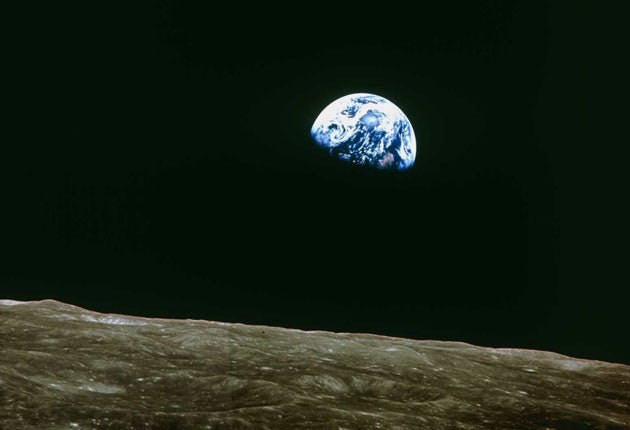
Your support helps us to tell the story
From reproductive rights to climate change to Big Tech, The Independent is on the ground when the story is developing. Whether it's investigating the financials of Elon Musk's pro-Trump PAC or producing our latest documentary, 'The A Word', which shines a light on the American women fighting for reproductive rights, we know how important it is to parse out the facts from the messaging.
At such a critical moment in US history, we need reporters on the ground. Your donation allows us to keep sending journalists to speak to both sides of the story.
The Independent is trusted by Americans across the entire political spectrum. And unlike many other quality news outlets, we choose not to lock Americans out of our reporting and analysis with paywalls. We believe quality journalism should be available to everyone, paid for by those who can afford it.
Your support makes all the difference.It has been part-religion and part socio-political crusade, has penetrated all corners of the globe and on Saturday it is 50 years old. But how much of a difference has the modern environment movement really made?
We know the noble causes. They trip off our tongues, from banning whaling, halting deforestation and saving endangered species to mending the hole in the ozone layer.
This week in i we will be trying to assess the Green movement's successes and failures since it began with the publication of Rachel Carson's Silent Spring in 1962. But to do so, we need a feel for the history of the movement as a whole. We can recount it in a number of ways but perhaps the most powerful is to recount it through its people. They are overwhelmingly the idealistic activists of the environmental pressure groups around the world who down the years have not only protested at despoliation of the planet, they have taken direct action to try to stop it – and have done so in the Greenpeace tradition of resolute non-violence.
Most are of course anonymous, until sometimes they pay the ultimate price, like Fernando Perreira, the photographer killed when French agents blew up the Greenpeace ship Rainbow Warrior in Auckland in 1985, or Chico Mendes, the rainforest activist assassinated by Brazilian ranchers in 1988.
But some do emerge with key ideas or actions, at key moments, and the first is a name that will surprise most people: US astronaut William Anders, a crew member of Apollo 8, the first manned spacecraft to circle the Moon.
When, on Christmas Eve 1968, he and his fellow crewmen emerged in their craft from behind the Moon's dark side, they saw an astounding sight – an exquisite blue sphere hanging in the blackness of space. The photograph Anders took is known as "Earthrise", and its taking was one of the most profound events in the history of human culture. Its effect was enormous, not only because it stunned and amazed us, but because it fed into a burgeoning concept – that of Spaceship Earth.
This had been developed in a 1965 book of that name by the British economist Barbara Ward-Jackson. Her idea was of the planet as a craft with strictly limited resources – which the crew needed to look after with great care.
A series of thinkers then began to explore these limits, and in two books in particular produced what we might term the first environmental scare stories. One was The Population Bomb by biology professor Paul Ehrlich, the other was The Limits to Growth by a group of researchers from the Massachusetts Institute of Technology working under the label of The Club of Rome. Both confronted issues which still confront us – the soaring rise in human numbers, and the finite nature of natural resources – but both made claims which now look exaggerated, Ehrlich prophesying mass global starvation in the 1970s and 1980s, and the Club of Rome suggesting many natural resources would run out by 2000. Yet, at the time, they gave nascent environmentalism its essential characteristic, a sense of urgency.
But the profoundest of all the books during the Green movement's 50 years is Gaia, the revolutionary look at life on Earth by the British scientist James Lovelock,from 1979. His idea was that the planet behaved like a single giant organism – that it possessed a planetary-scale control system which itself kept the environment fit for life. If Earthrise is the Green movement's iconic image, Gaia might be its sacred text.
It is surprising, perhaps, that there is not a single book which stands out about the most serious of all our environmental problems: climate change.
But there is a key figure: James Hansen, the Nasa scientist who alerted Americans to global warming more than 25 years ago, and continues to do so.
Join our commenting forum
Join thought-provoking conversations, follow other Independent readers and see their replies
Comments